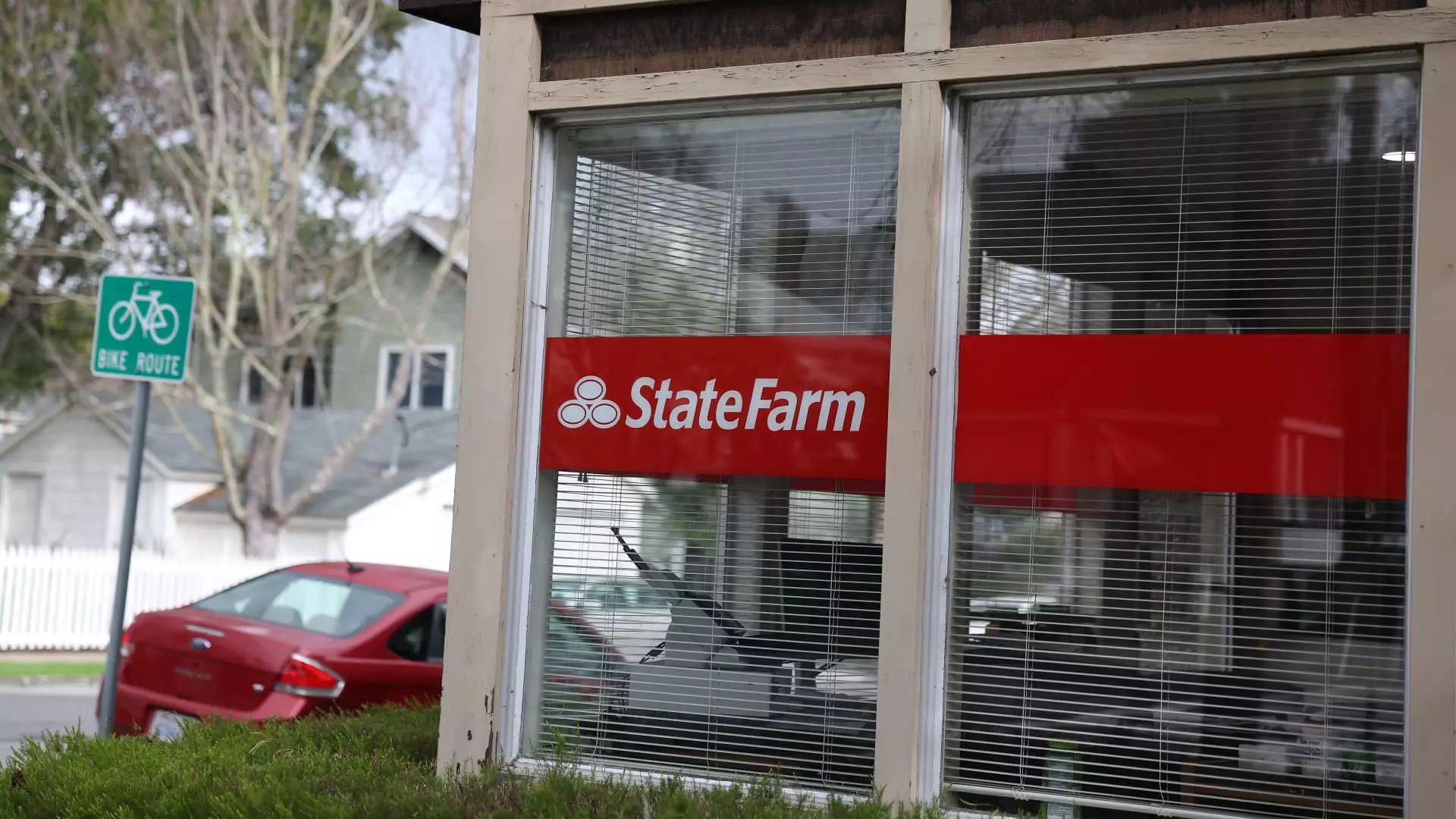California has long been known for its golden beaches and enviable climate, but the devastating wildfires that swept through Los Angeles in January have illuminated a harsh reality: the state’s insurance market is on the brink of collapse. With estimated total damages ranging from $250 billion to $275 billion, the financial aftershocks of these natural disasters are reverberating across the state. State Farm, California’s largest property insurer, is now in a precarious position, petitioning for a significant rate hike to ensure that it can continue to serve its nearly 3 million policyholders. For consumers, this situation raises pertinent questions regarding the balance between affordability and stability in an inherently volatile market.
The wildfires have shifted the focus from mere abstract risk to tangible financial urgency. State Farm’s requirement to raise its rates comes not just from instinct but as a necessary measure to respond to the staggering financial impact of these disasters. The Californians whose homes and livelihoods have been subjected to the whims of nature deserve an insurer that can actually support them when disaster strikes. If State Farm can’t raise its premiums, we’re all on the Titanic, according to some voices in the regulatory sphere, heading toward an iceberg.
The Regulatory Tightrope
The hearing in Oakland that shares the fate of State Farm’s future isn’t just a regulatory formality—it’s a pivotal moment that encapsulates the struggle between governmental oversight and market viability. Insurance Commissioner Ricardo Lara has historically hesitated to approve significant hikes in homeowners’ and auto insurance rates, a decision likely influenced by the sensitive nature of consumer sentiment. Yet, this hesitance also runs the risk of neglecting an industry that’s currently facing unsustainable pressures.
While one can empathize with consumers struggling to keep their homes insured in a climate of cascading disasters, it’s essential to understand that the long-term sustainability of the insurance sector is crucial, too. The financial well-being of these companies directly impacts their ability to provide coverage when Californians need it most. The insurance landscape in California has become a paradox: insufficient rates lead to underfunded insurers, and underfunded insurers mean a failure to support policyholders adequately in times of crisis.
The Perils of Ignoring Economic Realities
State Farm has sought an emergency 17% increase after initially proposing a 22% hike, which reflects their attempt to navigate the turbulent waters of financial management amid catastrophic losses. This kind of upward adjustment is not merely about enriching the company; it’s about fiscal survival—both for themselves and their policyholders. Additionally, the call for a staggering 38% increase on renters’ policies indicates the growing risk that landlords face in a volatile insurance environment.
Critics, such as Consumer Watchdog, argue that State Farm hasn’t substantiated its claim for a rate raise adequately, casting doubt on their intentions and roadmap. But in a world where California has faced an alarming uptick in natural disasters, such skepticism nearly feels out of touch. The ongoing trend of rising claims deductions compared to premiums collected isn’t a mere statistic; it’s a sign that the status quo cannot endure much longer. If insurers like State Farm can’t cover their obligations, many residents may find themselves without coverage—an alarming prospect in a state that has become synonymous with disaster.
An Alternate Route: Sustainable Insurance Strategies
One proposed remedy to the ongoing crisis is California’s “Sustainable Insurance Strategy,” a framework intended to offer insurers more precise methodologies for calculating their rates. This approach recognizes the need to incorporate catastrophe modeling and the costs of reinsurance into premium calculations. Such measures seem essential to arrest the downward spiral and recalibrate the entire system, allowing insurers to set rates that adequately reflect risk without displacing the average Californian from their homes. Janet Ruiz from the Insurance Information Institute encapsulates this sentiment perfectly: the state’s attempts to implement this plan are paramount for creating a more stable insurance environment.
Nevertheless, as we ponder possible solutions, we must remain cautious. California has a history of well-intended regulations that sometimes end in disasters of their own making. Should we place all our hopes on this latest strategy without recognizing that markets also need flexibility to thrive? The balance between regulation and business autonomy is a fine line, and history has shown that meddling too much can strangle innovation.
Embracing Realistic Perspectives
The coming days will reveal whether State Farm’s appeals for much-needed rate adjustments will be met with understanding from regulators. But as consumers, we must also adopt a broader perspective. We cannot simply vilify insurers for their attempts to protect themselves in a landscape fraught with peril. It’s time to have an honest conversation about risk, responsibility, and the realities of insuring properties in a region that has repeatedly faced the wrath of nature. Ultimately, rate hikes are not merely about profit margins; they’re about ensuring that we have a functioning safety net when the next wildfire, earthquake, or catastrophic event inevitably strikes. The stakes are too high for complacency; Californians deserve a solution that balances protection with prudent financial management.

